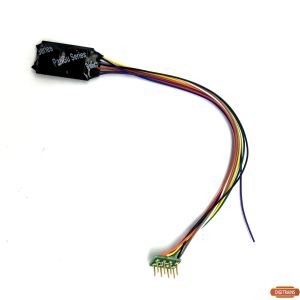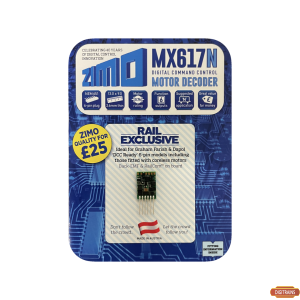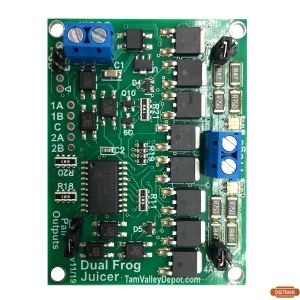Digitrainsound / Zimo New Class 03 Multidrive Sound Decoder by Paul Chetter
F Key Number Description of Function or Sound
0 Lights, if fitted (white and yellow wires)
1 Sound on/off
2 Horn
3 Brake Squeal
4 Cab light, if fitted (Aux1, green wire)
5 High -Low two tone horn
6 Low-High two tone horn
7 Toot
8 Brake release (air release)
9 Variable length flange sounds
10 Coupling
11 Very Short toot
12 Destroy Vacuum Brakes
13 Door slam
14 Buffering up
Class 03 information;
The class 03 diesel mechanical shunter sound decoder has four slightly different sound schemes loaded onto it accessed by setting CV265 to between 101 and 104. they are in 2 groups of 2. 101 is the standard set using driving noises and very obvious genuine gear change noises, these were recorded in the cab of a real loco in action. 102 is the same driving noises but without the gear actuator noises between shifts as if you were observing the loco in action trackside without hearing the cab noises. Sets 103 and 104 are the same but the gear changes happen at shorter intervals tuned for short length runs on shorter layouts so that shunting plank operators get all the fun of the gearchanges on their operations.
Soundscheme tips;
Throttle Response Scheme. Driving tips.
As supplied, the decoder will produce the sounds of your chosen locomotive type
Use F1 to switch on the sound. After the start-up routine the loco will stand with the diesel engine, the Prime Mover (PM), ticking over at idle.
When your installation is complete we suggest that you run the loco on 128 speed steps and note the steps that the engine revs increase each time to their next level. The different loco types will have different thresholds.
The sounds will respond to the throttle control in the following way:
Select a speed step between 1 and your first ramp up. The brakes will release, the PM will increase power to get the loco moving, and will then spool down back to idle. This is entirely prototypical, and will allow you to make slow movements or shunt your yard without the PM ‘thrashing’ all the time.
Speeds above ramp up 1 will result in the PM increasing in revs. This will continue at the next level until ramp up 2 when a further increase in power will be initiated. The final high speed running sounds will begin at the last threshold you noted on your test drive.The sounds will ramp down at similar points on deceleration. Also when stopping, speed should never be dropped down any further than step 16 for a short while to allow the engine to revert to idle before stopping.
Notice the complex transitions between the sounds. It can be quite entertaining to switch between speed steps just below and just above each threshold; the sounds change dramatically but with little change in speed. This is also prototypical, depending upon gradient and load.
These sound projects are ideally designed to be used on 128 speed steps and with gentle setting off with no more than 16 steps to pull away - then up to 32 or 48 to throttle up . If you prefer running on 28 steps then the transitions can be noted for that range on test drive and the locos driven accordingly.






